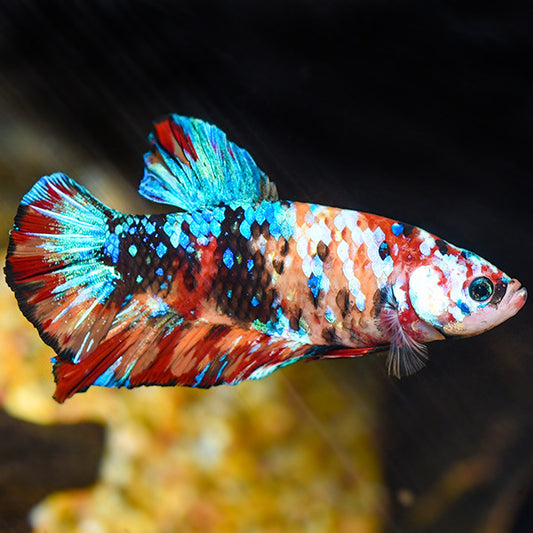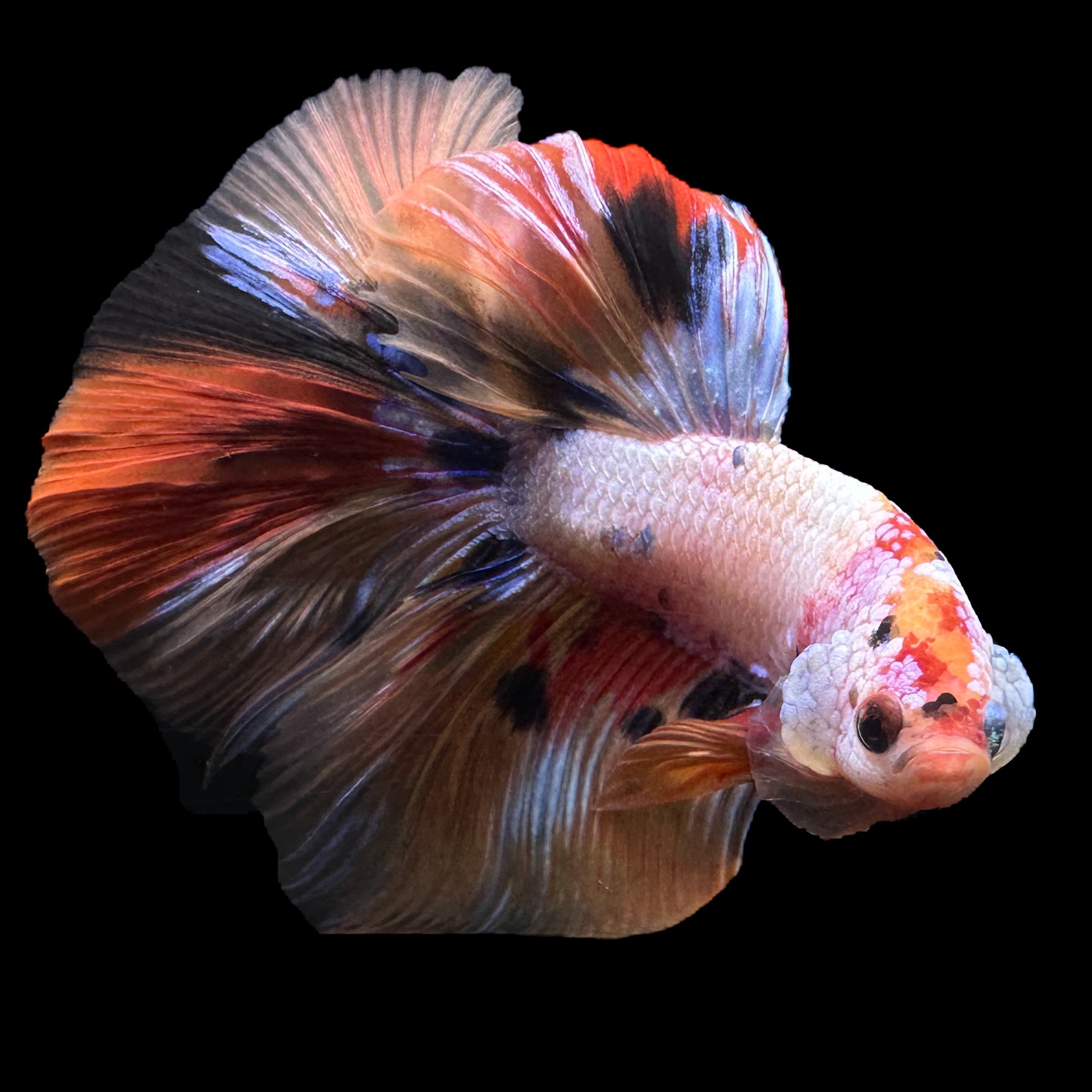Everything About Betta Fish: Understanding Their Unique Needs, Actions, and the very best Practices for Optimal Treatment
Understanding the unique requirements and behaviors of Betta fish is important for any kind of aquarist wanting to offer optimum treatment. These captivating animals, belonging to the warm waters of Southeast Asia, show unique territorial tendencies and need specific ecological conditions to prosper. From picking the right storage tank size to acknowledging possible health and wellness issues, different factors substantially affect their wellness. As we discover these aspects better, the ramifications for both novice and skilled fish keepers end up being increasingly apparent, increasing inquiries concerning how best to fit these exceptional fish in our homes.
Betta Fish Overview
Although often appreciated for their vivid shades and streaming fins, Betta fish, clinically understood as Betta splendens, are complicated creatures that require specific like thrive. Stemming from Southeast Asia, these freshwater fish are understood for their territorial nature and special habits. Betta fish display sexual dimorphism, with males displaying much more vivid colors and longer fins than ladies.
Their aggressive propensities, particularly amongst men, demand cautious factor to consider when real estate them. Bettas are typically maintained in single-specimen storage tanks to avoid territorial conflicts. However, they can coexist in harmony with specific suitable types in larger community containers, supplied the atmosphere meets their needs.

To make certain ideal care, aquarists should understand their special behavioral traits, dietary demands, and habitat demands. betta fish. With appropriate focus, Betta fish can display their vibrant characters and grow in a properly maintained aquarium setting
All-natural Environment and Setting
Betta fish flourish in a diverse range of natural habitats, largely found in the shallow waters of Southeast Asia, consisting of rice paddies, swamps, and slow-moving streams. These settings are characterized by warm temperatures, generally between 75 ° F and 82 ° F(24 ° C and 28 ° C ), and a pH degree ranging from 6.5 to 7.5, which is suitable for their health and wellness and wellness.
In their natural environments, Betta fish are accustomed to thick plants, offering both shelter and reproducing premises. The visibility of plants such as floating water lilies and thick turfs not just uses protection from killers however also adds to the oxygenation of the water, which is necessary for their respiratory demands. Furthermore, these environments commonly have areas of still water, permitting Betta fish to display their all-natural behaviors such as bubble nesting.
Recognizing the natural environment of Betta fish is important for fish tank lovers. Reproducing these conditions-- through water temperature level, pH equilibrium, and the addition of real-time plants-- can significantly boost the total health and wellness and long life of these captivating fish, ensuring they grow in a home aquarium setup.
Social Habits and Interactions
Understanding the social actions and interactions of Betta fish is essential for successful fish tank monitoring. Betta fish, or Siamese fighting fish, are known sites for their unique behavior traits, characterized mainly by territoriality and aggressiveness. Males, in specific, display very hostile actions in the direction of one another, bring about the infamous track record of Betta fish as boxers. In a restricted room, 2 men can take part in violent conflicts, frequently causing injury or death.
Alternatively, female Bettas display much less aggressive habits and can coexist in teams, recognized as sororities, if presented correctly. It is critical to check their communications closely, as power structure and dominance can lead to problems. Recognizing the characteristics within a Betta area is vital; developing hiding spots and ensuring sufficient area can alleviate hostility.
In addition, Betta fish may also display inquisitiveness and social actions in the direction of other varieties. While they can exist side-by-side with certain non-aggressive storage tank friends, it is important to select suitable species to stay clear of tension and aggression. Generally, recognizing these social interactions is vital to fostering an unified fish tank environment for Betta fish.
Essential Treatment Standards
Supplying appropriate care for Betta fish is important to their health and wellness. Regular water adjustments-- around 25% once a week-- help keep water top quality.
Betta fish need an ideal container dimension; a minimum of 5 gallons is suggested to give adequate space for swimming and hiding. Include decorations and plants to develop a revitalizing environment, yet prevent sharp items that could hurt their fragile fins.

Finally, make sure the tank is equipped with a filter to keep the water tidy, yet make use of a gentle filter to prevent solid currents that can stress the fish. By complying with these essential care standards, owners can promote a healthy and vivid Betta fish.
Common Wellness Issues and Solutions
In the treatment of Betta fish, awareness of typical health and wellness problems is necessary for keeping their health. One widespread concern is fin rot, typically triggered by poor water top quality or microbial infection. Signs and symptoms consist of torn or discolored fins. To deal with fin you can try here rot, improve water problems and take into consideration utilizing a broad-spectrum antibiotic.
Another common condition is ich, a parasitic infection defined by white places on the fish's body (betta fish). Therapy involves increasing water temperature level and including aquarium salt to the tank, as this can help eliminate the bloodsucker
Swim bladder condition is also regularly observed, bring about buoyancy troubles. This problem might develop from Read Full Report overfeeding or irregular bowel movements. A fasting duration of 24-48 hours, followed by a diet plan of blanched peas, can give relief.
Lastly, bettas may deal with velvet disease, suggested by a gold dust-like look on their skin. Therapy generally needs drug especially designed for outside bloodsuckers, along with boosted tank hygiene.
Routine tracking of water criteria, keeping a clean environment, and offering a balanced diet plan are vital safety nets. By resolving these health and wellness issues promptly, Betta fish can lead much healthier, extra vivid lives.
Final Thought
In summary, successful betta fish treatment needs an understanding of their distinct demands and habits. Regular surveillance of health and wellness and water high quality, along with a well balanced diet plan, contributes to the long life and vibrancy of betta fish.